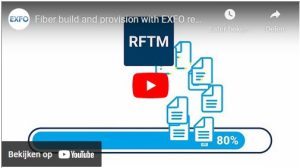Maximizing efficiency and reliability of Fiber networks: leveraging RFTM for utilities and infrastructure providers

Utilities and infrastructure providers rely on fiber optic networks to enhance the efficiency, reliability, and control of their operations. These networks serve as communication support and connectivity solutions that enable seamless data transmission and high-speed connectivity. In addition to meeting their own operational needs, utilities can also leverage their fiber infrastructure to offer connectivity services to other organizations, opening up new revenue streams. To further optimize their operations and ensure network reliability, utilities and infrastructure providers are turning to remote fiber testing and monitoring (RFTM) solutions. This article explores the transformative benefits of RFTM and how it revolutionizes the management of fiber networks for utilities and infrastructure providers.
Streamlined maintenance and troubleshooting
RFTM is a fiber management system (FMS) that empowers utilities and infrastructure providers to remotely test and monitor their fiber-optic networks, enabling rapid fault detection and accurate location. By leveraging RFTM solutions and the accuracy of the optical time domain reflectometry (OTDR) capabilities built into remote test heads, technicians can pinpoint fiber faults or degradation, reducing the need for time-consuming manual inspections. Furthermore, repair technicians can leverage remote test heads to test their work and ensure “first- time- right” quality repairs prior to leaving the site. This streamlined maintenance process leads to significant cost savings, improved operational efficiency, and enhanced service reliability.
Efficient fault detection and resolution
RFTM allows for continuous monitoring of the optical network, ensuring real-time detection of abnormalities or disruptions. By proactively addressing potential issues, utilities and infrastructure providers can promptly resolve fiber breaks, bends, or degradation, minimizing service disruptions. This proactive approach significantly improves the overall reliability and resilience of the fiber infrastructure.
Keep control of SLAs
In the dark fiber leasing business, where utilities lease out unused fiber capacity to third parties, ensuring service-level agreements (SLAs) is crucial. RFTM plays a vital role in monitoring the leased lit fibers to meet the agreed-upon SLAs. By remotely monitoring these fibers, utilities can detect anomalies or slower degradation, and promptly address them. RFTM enables utilities to proactively monitor the leased dark fibers, ensuring that they consistently meet the agreed-upon service quality standards.
Conclusion
Remote fiber testing and monitoring (RFTM) solutions are revolutionizing the way utilities and infrastructure providers manage their fiber networks. By enabling streamlined maintenance and troubleshooting processes, efficient fault detection and resolution, and optimized asset management, RFTM enhances operational efficiency, minimizes downtime, and maximizes the value of fiber infrastructure. Utilities and infrastructure providers can leverage RFTM to ensure reliable and robust communication networks, supporting their own operations and opening up new opportunities for revenue generation in the connectivity market. With RFTM, utilities and infrastructure providers can maximize efficiency, reliability, and customer satisfaction in a rapidly evolving digital landscape.
